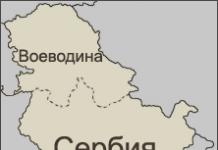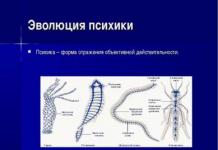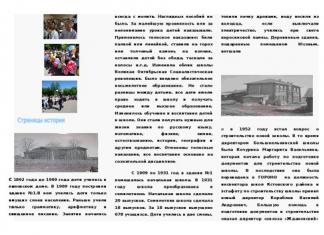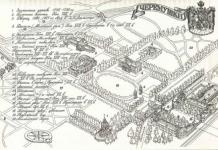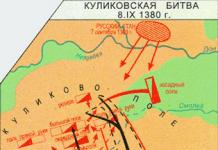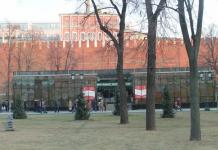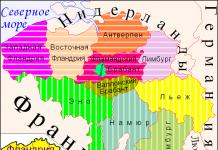The structure of the vocabulary is considered in two aspects: systemic relations between lexical units and stratification of the vocabulary. Lexicology studies the vocabulary of a language as a system of systems. Groups of words that form a system can differ in volume, in what underlies their commonality (form or content), in the degree of similarity of the forms or meanings of lexical units, in the characteristics of relationships (paradigmatic or syntagmatic) between lexical units. The minimal groupings of individual lexical units, based on the similarity of form, form homonyms (see Homonymy) or paronyms (with incomplete similarity; see Paronymy); when relying on content, groupings of words are distinguished based on conceptual logical relations or a paradigmatic type - equivalence (synonyms), opposites (antonyms, conversives: "give" - "receive"), juxtapositions (semantic series: "pine" - "birch" - “oak”, “warm” - “hot”), inclusions (hyper-hyponymic relations: “tree” - “birch”; see Hyponymy), or syntagmatic type (subject - attribute, part - whole, etc.) .
Lexicology also explores larger groupings of words - fields, which are also formed on the basis of form (for example, a nest of words) or content and are built on the basis of paradigmatic or syntagmatic relations. The totality of paradigmatic and syntagmatic fields forms a thematic field that reflects a certain area of extralinguistic reality (for example, means of transport, animal husbandry, art, etc.). When taking into account the form and content (polysemy, synonymy, word-formation connections, etc.), not a single section of the vocabulary is isolated, relationships are established between any lexical units.
The lexical composition of the language is heterogeneous, stratified. It distinguishes categories of lexical units for various reasons: according to the sphere of use - vocabulary commonly used (interstyle) and stylistically marked, used in certain conditions and areas of communication (poetic, colloquial, scientific, professional vocabulary, vernacular, argotisms, regionalisms, dialectisms); in connection with the study of variants of literary languages - their specific vocabulary; by emotional coloring - neutral and emotionally colored (expressive) vocabulary; according to the historical perspective - neologisms, archaisms (see Obsolete words); by the origin of words or the realities they denote - borrowings, xenisms (designations of foreign realities), barbarisms, internationalisms; in relation to the language system and functioning - active and passive vocabulary, potential words, occasionalisms. The lexical system is the least rigid of all subsystems of the language, the boundaries between groupings of words are fuzzy, the same word can belong to different categories of lexical units in its different meanings and uses.
When studying vocabulary in its functioning, the following problems are considered: the frequency of vocabulary in texts; vocabulary in speech, in the text, its nominative function, contextual shifts in meanings and features of use (many of the lexicological categories are refracted in a peculiar way in speech, in connection with which linguistic and speech synonyms, antonyms are distinguished; lexical polysemy and homonymy in speech are usually eliminated or take the form word play or semantic syncretism); compatibility of words, which is considered at the semantic levels (compatibility of concepts denoted by these lexical units: “stone house”, “fish swims”) and lexical (compatibility of lexemes: “to give a lecture”, but “to make a report”). Free and bound combinations are distinguished, and within the latter - idiomatic, which is the subject of study of phraseology.
Lexicology explores ways to replenish and develop the vocabulary of a language, distinguishing 4 ways to create nominations, three of which are based on the use of internal resources of the language - the creation of new words (see Word formation), the formation of new meanings (polysemy, transfer of meanings, and patterns of filiation of meanings are studied) , the formation of phrases, and the fourth - on attracting the resources of other languages - borrowings (lexical borrowings and tracing papers). The factors and forms of integration of borrowed words are investigated.
An important aspect of lexicology is the study of words in their relation to reality, since it is in words, in their meanings, that the life experience of the collective in a certain era is most directly fixed. In this regard, such problems as vocabulary and culture, the problem of linguistic relativity (the influence of vocabulary on the “vision of the world”), linguistic and extralinguistic components in the meaning of a word, background vocabulary, etc. are considered.
There are general, particular, historical, comparative and applied lexicology. General lexicology establishes the general laws of the structure, functioning and development of vocabulary, private Lexicology studies the vocabulary of one language.
historical Lexicology studies the history of words in connection with the history of the objects, concepts, and institutions they designate. The data of historical lexicology are widely used in historical science. Historical lexicology gives a description of the dynamics of the vocabulary (or its section) or a static description of a slice of the historical state of the language. The subject of research can be a single word or a lexical system (conceptual field), the history of words as such, or forms of semantic changes (for example, narrowing of the meaning), processes in the semantic structure of words (for example, the study of the development of words with an abstract meaning, the process of synonymization, the emergence of proper names etc.). In its direction, historical and lexicological research can be semasiological (changes in the meanings of words or groups of words are studied) or onomasiological (changes in the method of naming an object). In view of systemic relations inside the vocabulary, when studying a group of words, both aspects are present simultaneously, since the study of changes in the meaning of one word is impossible without studying the evolution of the designation of a concept common to a group of words.
Comparative Lexicology studies the vocabulary in order to identify the genetic relationship of languages, structural and semantic similarities and differences between them (regardless of relationship) or in order to derive common lexicological (often semantic) patterns. The collation can concern any aspect of the vocabulary. Individual words can be matched, but greater value has a comparison of groups of words (or fields), for example, verbs of motion, terms of kinship, etc., which shows how the designation field (objective reality) is divided differently by lexical means of different languages, what aspects of objects are fixed in the meanings of words in different languages. Of great interest for comparative lexicology is the comparison of the functioning of broad lexicological categories in two languages: synonymy, antonymy, types of polysemy, phraseology, correlation in the meaning of words of general and particular, logical and emotional, etc. The data of comparative lexicology are widely used in applied sections of linguistics ( lexicography, translation), as well as in ethnography.
Applied Lexicology covers mainly 4 areas: lexicography, translation, linguistic pedagogy and culture of speech. Each of these areas enriches the theory of lexicology. For example, lexicography encourages deepening the problem of the meaning of a word, improving its description, highlighting meanings, studying compatibility, etc. Translation provides a lot of material for comparative lexicology, word problems when teaching native and non-native languages sharpen a number of general lexicological issues (word and context, word combination, synonymy - word choice, vocabulary and culture). At the same time, each of them uses the provisions and conclusions of lexicology, however, lexicological categories receive specific refraction in them; for example, the problems of highlighting the meanings of a word, phraseology in lexicography are solved differently depending on the type of dictionary.
Lexicology uses general linguistic research methods (see Method in Linguistics). The most commonly used methods include: distributive (determining the boundaries of a word, its morphological structure, delimiting meanings, etc.), substitution (studying synonymy, meanings of a word), component-oppositional (determining the structure of the meaning of lexical units, the semantic structure of a word as a whole, analyzing semantic fields, changing the meanings of lexical units, actualizing the meaning of a unit in the context), transformational (in word formation, when identifying the semantic load of a word in a context by folding or expanding syntactic structures, when determining the meaning of a lexical unit). Qualitative methods are supplemented by quantitative-statistical methods (determining the frequency of a lexical unit, its syntagmatic connections, etc.; see Quantitative Methods in Linguistics).
Lexicology data are used in many related disciplines: psycholinguistics (the study of word associations, etc.), neurolinguistics (types of aphasia), sociolinguistics (the study of the linguistic behavior of a team), etc. Some aspects and types of lexical units are studied in special sections of linguistics (see Onomastics, Phraseology, Culture of speech, Stylistics, Word formation, etc.).
[History of Lexicology]
Lexicology emerged as a separate section of linguistics later than some others, such as grammar. Even in the 20th century some early directions of structuralism denied the need to single out lexicology, either on the grounds that the vocabulary is allegedly weakly structured, or because linguistics should not deal with semantics at all, which is the core of lexicology (the school of L. Bloomfield).
A number of problems of lexicology were discussed long before its formation as a special branch of linguistics. AT ancient time and the Middle Ages, questions of semantics and structure of the word were considered. Ancient rhetoric paid attention to the artistic function of the word. The development of lexicography in Europe in the 16th-18th centuries. stimulated the development of lexicology. In the preface to explanatory dictionaries(for example, dictionary of the French Academy, 1694, English dictionary S. Johnson, 1755) a number of lexicological categories were noted (synonymy, word combination, primary and derivative words, etc.). The term "lexicology" was first introduced by the French encyclopedia D. Diderot and J. L. D'Alembert in 1765, where lexicology is defined as one of two (along with syntax) sections of the doctrine of language. The authors saw the task of lexicology in the study of words beyond their specific use in speech, in the study general principles organization of the vocabulary of the language. They singled out in lexicology the study of the external form, meanings and etymology of words (which also meant word formation). In treatises on the style of the 18th century. the ways of forming the figurative meanings of words were described in more detail. The first works on comparative historical linguistics (R. K. Rask, F. Bopp) laid the foundations for comparative lexicology. In the 19th century the main area of lexicological research in Europe was semantics: the internal form of the word was studied (W. von Humboldt), the general patterns of formation and evolution of the meanings of words (A. Darmsteter, G. Paul), historical lexicology received great development. The achievements of semasiology were generalized and developed in the work of M. Breal (1897), where semasiology appeared as a special branch of the science of language. Continuing into the 20th century the development of semasiology was aimed, on the one hand, at identifying the general semantic laws of the evolution of the meanings of words with the involvement of data from logic or psychology (E. Cassirer, H. Kronasser, S. Ullman, G. Stern and others), which subsequently led to the development of semantic universals , on the other - to the study of the history of words in connection with the history of objects (the school "Words and Things", characteristic, in particular, of dialectology). The onomasiological direction in lexicology, which contributed to the study of groups of words, was described in the book by B. Cuadri (1952).
The idea of a systematic nature of linguistic phenomena, which is increasingly penetrating into lexicology, was reflected primarily in the theory of lexical fields built on paradigmatic (J. Trier) and syntagmatic (W. Porcig) principles. The completion of the field theory is the thesaurus representation of the vocabulary organization (Sch. Balli, R. Hallig, W. von Wartburg). The problem of the general theory of the word as a unit of language was developed, discussions continued regarding the separability of the word and its criteria (Bally, A. Martinet, J. H. Greenberg and others), its semantics (C. K. Ogden, A. Richards, K. Baldinger) . The study of the correlation of vocabulary with the extralinguistic world, the history of words in the history of society (P. Lafargue; French sociological school: A. Meillet, E. Benveniste, J. Matore, M. Cohen), vocabulary and the structure of consciousness of speakers (E. Sapir , B. Whorf, L. Weisgerber). The linguists of the Prague school revealed the functional differentiation of vocabulary.
[Lexicology in Russia and the USSR]
Soviet linguists, based on the position that the word is the basic unit of the language, made a great contribution to the general theory of the word, to the definition of its boundaries, its relationship with the concept (A. M. Peshkovsky, L. V. Shcherba, Vinogradov, A. I. Smirnitsky, R. O. Shor, S. D. Katsnelson, O. S. Akhmanova, Yu. V. Rozhdestvensky); special attention is paid to the semantic aspect of the word (L. A. Bulakhovsky, V. A. Zvegintsev, D. N. Shmelev, B. Yu. Gorodetsky, A. E. Suprun and others). The achievement of Soviet lexicology is the development of a typology of word meanings (Vinogradov), the doctrine of lexico-semantic variants of a word (Smirnitsky), and an intermediate link in the development of word meanings (Budagov). Thanks to these studies, the problem of polysemy of the word received a reliable theoretical basis,
Investigating the word as a unit of language and vocabulary in its synchrony, Soviet linguists conduct research in the field of etymology (O. N. Trubachev), historical lexicology (Filin), and the history of the vocabulary of the literary language (Yu. S. Sorokin). There are numerous monographic studies on many categories of lexicology: synonyms, antonyms, internationalisms, terminology, phraseological units, etc. Exploring all layers and aspects of the vocabulary of different languages, Soviet linguists in the 70-80s. special attention is paid to the problems of systematic vocabulary, including lexical paradigmatics (Shmelev, A. A. Ufimtseva, Yu. N. Karaulov), lexical semantics in connection with general theory nominations and references, the interaction of vocabulary with other levels of the language, primarily with syntax (Yu. D. Apresyan), psycholinguistic aspects of vocabulary (the study of lexical associations, etc.), comparative study of the vocabulary of different languages (Budagov, V. G. Gak). Great practical and theoretical value has a study of interaction in the field of vocabulary of the languages of the peoples of the USSR (Yu. D. Desheriev, I. F. Protchenko). The methodology of lexicological research is being actively developed (M. D. Stepanova, N. I. Tolstoy, E. M. Mednikova, and others).
- Smirnitsky A. I., Lexicology of English language, M., 1956;
- Akhmanova O. S., Essays on General and Russian Lexicology, M., 1957;
- Zvegintsev V. A., Semasiology, M., 1957;
- Budagov R. A., Comparative semasiology research. (Romance languages), M., 1963;
- Katsnelson S. D., The content of the word, meaning and designation, M.-L., 1965;
- Stepanova M. D., Methods of synchronous analysis of vocabulary, M., 1968;
- Weinreich W., On the semantic structure of the language, trans. from English, in the book: "New in linguistics", v. 5, Moscow, 1970;
- Makovsky M. M., Theory of lexical attraction, M., 1971;
- Shansky N. M., Lexicology of the modern Russian language, 2nd ed., M., 1972;
- Doroshevsky V., Elements of lexicology and semiotics, M., 1973;
- Apresyan Yu. D., Lexical semantics, Moscow, 1974;
- Stepanova M. D., Chernysheva I. I., Lexicology of modern German language, M., 1975;
- Karaulov Yu. N., General and Russian ideography, M., 1976;
- Vinogradov V.V., Selected writings, v. 3, Lexicology and lexicography, M., 1977;
- Gak V. G., Comparative lexicology, M., 1977;
- Lopatnikova N. N., Movshovich N. A., Lexicology of modern French, M., 1982;
- quadri B., Aufgaben und Methoden der onomasiologischen Forschung, Bern, 1952;
- Ullman S., The principles of semantics, 2 ed., Glasgow-L.-Oxf., 1959;
- Weinreich U., Lexicology, "Current Trends in Linguistics", The Hague, 1963, v. one;
- Rey A., La lexicologie. Lectures, P., 1970;
- Lyons J., Semantics, v. 1-2, Camb., 1977;
- see also literature under articles
Lexicology (gr. lexis - word + logos - teaching) is a section of linguistics that studies the word as a unit of the vocabulary of the language (lexicon) and the entire lexical system (lexicon) of the language.
The term lexicon (gr. lexikos - verbal, dictionary) is used to denote the vocabulary of the language. This term is also used in narrower meanings: to determine the totality of words used in one or another functional variety of the language (book vocabulary), in a separate work (the vocabulary of "The Words about Igor's Campaign"); you can talk about the vocabulary of the writer (Pushkin's vocabulary) and even one person (The speaker has a rich vocabulary).
Vocabulary is the central level of organization of the language system, reflecting in the most detail and massively changes in the semantic areas of society, as well as system-wide changes in the language. Of particular importance are lexical data for building a systematic picture of the functioning and development of languages, incl. identifying the processes of formation of their systems.
Exploring vocabulary as a system, lexicology has in mind the interaction between the meanings of words and concepts. In lexicology, the word is considered, first of all, from the point of view of the meaning, meaning and connections of this word with other words. Concepts are most often international, while the meanings of words are national.
Lexicology studies the patterns of functioning and development of the vocabulary of a language, develops the principles of the stylistic classification of words, the norms of literary word usage in its relation to vernacular, questions of professionalism, dialectisms, archaisms, neologisms, normalization of lexicalized phrases.
Lexicology considers the vocabulary of a language (lexicon) from the point of view of what a word is, how and what it expresses, how it changes. Phraseology adjoins lexicology, which is often included in lexicology as a special section.
Lexicology is divided into general, particular, historical and comparative. General lexicology deals with the general patterns of structure lexical system, questions of the functioning and development of the vocabulary of the languages of the world.
Private lexicology studies the vocabulary of a particular language. Historical lexicology traces changes in the meanings (semantics) of a single word or a whole group of words, and also explores changes in the names of objects of reality (see below for etymology). Comparative lexicology reveals similarities and differences in the division of objective reality by lexical means of different languages. Both individual words and groups of words can be matched.
The vocabulary of a language can be considered from the semasiological and onomasiological points of view. A special branch of lexicology that deals with the study of the content side of vocabulary is called semasiology. This section deals with the relationship between the word, the concept and the designated object, the semantic structure polysemantic word, ways of development of meanings, types of meanings of words.
The onomasiological approach involves the description of vocabulary in terms of ways of naming any concepts with a word. The onomasiological approach to vocabulary is most fully manifested in a special section of the science of language - in word formation.
Semasiological and onomasiological approaches to the study of vocabulary include lexicology in broader sections of linguistics. Semasiology is part of such a section as semantics. Semantics explores the content side of all signs of a language - morphemes, words, sentences. The onomasiological approach includes questions of lexicology in a number of problems of the theory of nomination (naming). The theory of nomination is considered in such a section as onomasiology.
In lexicology, lexicography and onomastics are traditionally distinguished. Onomastics is a branch of lexicology that studies proper names. Depending on the category of objects that have their own names, onomastics is divided into anthroponymy, which studies the names of people, toponymy, which describes the names of geographical objects, zoonymy, which considers the names of animals, etc.
Lexicography is the field of lexicology that studies the principles of compiling dictionaries.
Lexicology can be descriptive, or synchronic (gr. syn - together + chronos - time), then it explores the vocabulary of the language in its state of the art, and historical, or diachronic (gr. dia - through + chronos - time), then its subject is the development of the vocabulary of a given language.
All sections of lexicology are interconnected: the data of general lexicology is necessary when studying the vocabulary of a particular language in order to understand the deep essence of lexical units, their connection with the cognitive structures of consciousness; many lexical phenomena need historical commentary, clarifying the features of their semantics and use; information from comparative lexicology helps to understand many features and patterns of functioning of the vocabulary of a particular language, such as, for example, the common lexical composition, borrowing, interference, and others.
Lexicology is closely related to other linguistic disciplines and other sciences.
The choice of a word for transmitting information is the result of complex cognitive processes - all this connects lexicology with history, philosophy, logic, cultural studies, and psychology.
Lexicology relies on the data of historical disciplines - the study of written monuments helps to understand the development of the lexical composition of the language, the relationship of the language with the development of society; associated with stylistics, in which the stylistic resources of the language, including lexical ones, are studied in more detail; with linguistic analysis of the text, since, first of all, lexemes are directly connotatively marked units, they act as the main text-forming means.
This article will focus on lexicology. What it studies, what it is, what sections it is divided into and what modes of action it has, we will consider here.
Introduction
Lexicology is a linguistic branch that studies vocabulary. We learned what lexicology studies, and now we will get acquainted with its general and particular parts. The latter is busy studying the lexical composition of a particular language. This science turned its attention to:
- the word and its meaning;
- word relationship system;
- historical facts, through which the vocabulary was formed in the modern sense;
- the existing difference of words according to the functional and stylistic character in various speech spheres.
Object and subject

The word serves as the object that lexicology studies. Another object of study is word formation and morphology. However, if in these branches of science the word is a means by which the grammatical structure and word-formation model, as well as language rules are studied, then in the science of lexicology the word is studied in order to understand the meaning of the word itself and the language vocabulary. It does not study individual linguistic units of oral speech, but, directly, the entire language system.
What does lexicology study in Russian? First of all, she is busy with the consideration of the Russian and Slavic languages, which had an active development in the course of historical events.
The subject of lexicology is
- The word, as part of the language, considered with the help of the theory of the word.
- The structure of the linguistic composition of words.
- Functionality of a lexical unit.
- Possible ways of replenishing the linguistic composition.
- Relationship with an extralinguistic type of activity, for example, with culture.
Main sections
Lexicology is a science that studies vocabulary, its basis. Science is quite extensive and has many sections, including:
- onomasiology - a section on the process of naming objects;
- semasiology - a section that studies the word and phrases, namely their meaning;
- phraseology - studies the vocabulary relationship between each other, and among themselves;
- onomastics - busy with the study of existing names;
- etymology - a section that drew attention to the historical origin of the word, also considers the abundance of vocabulary in general;
- lexicography - focused on the theory and practice of compiling dictionaries;
- stylistics is a section that studies the meaning of sayings and words of a connotative type.
common data
Lexicology is a science that studies the vocabulary of a language, and the number of words in it cannot be counted. One, only seventeen-volume collection of the Dictionary of Modern R.Ya. includes more than 130,000 words, and the Oxford Dictionary contains over 300,000 words.

Lexicology is the study of the vocabulary of a language, which also includes obscure units of speech, such as agnonyms, which refer to words with an incomprehensible meaning.
Speech units that are used frequently are part of the language's active vocabulary. Exist frequency dictionaries with which you can identify frequently used words. However, there is the concept of a passive dictionary, which includes language elements that carry information about something, but are used relatively rarely. Such words belong to a limitedly used vocabulary - a dialect, professional or slang word.
Replenishment of the vocabulary
We have learned what lexicology studies, and now we will turn our attention to the ways in which the vocabulary is replenished.

The phenomenon of borrowing vocabulary from the languages of other peoples is one of the main such ways. Taken long ago, foreign words are now considered native Russian. However, very often this is not the case, an example of this is the unit of speech - bread, which came into the Russian language from German. Due to borrowing, the original meaning of the word may change.
Another way of enriching lexical components is the formation of a new set of words. Such components of speech are called neologisms.
The further development of the fate of new words can be varied: some lose their novelty and become fixed among other elements of the language, others can be considered new formations created by an individual author (occasionalisms). The expansion of the boundaries of vocabulary also occurs due to the development of a new range of meanings for words that have been known for a long time and well.
Words that have sunk into oblivion

Lexicology studies words, among which obsolete units of the language are also considered. Due to the influence of time on the word, by the way, it goes out of use. This can be observed, for example, with the disappearance of an object or phenomenon that was often used before. These words are called historicisms. The disappearance of such a word also leads to the loss of the realities that it carries in itself, however, sometimes the realities themselves do not disappear, but are renamed and called archaisms.
Vocabulary - as a mobile type system
Vocabulary is like a system capable of promotion. This allows us to determine that words have a variety of relationships with each other for various semantic reasons. Such words include synonyms - speech units that have a difference in form, but are close to each other in meaning.

There are words that are interconnected by the presence of a common cause in the opposite meaning - antonyms. They point to opposite "things". Available opposite meaning in one speech unit is called enantiosemy. An example would be the phrases: "listen" in the sense of the phrase "listen carefully", and in the sense of "leave a deaf ear".
The connection of words can be expressed in the form. Almost every language carries words that have an external identity, can have different meanings. An example is the variety of meanings of the word - braid, which can be both an agricultural tool and a braid of hair. These types of words are called homonyms.
Homonyms, in turn, include different types of differences of the same character. If language units coincide in the “form” of sounding only if there are separate reasons, then such words are called homoforms. Words that coincide in spelling but differ in sound led to the creation of the term - homograph. If the pronunciation is the same, but the spelling is different, then this word is called a homophone.
Paronyms include similar words, but having a difference in identity according to the characterized parameters of form and meaning. They also perfectly show us the essence of the formal form of communication.
There is a concept of interlingual homonyms and paronyms. Such words have a formal similarity, but in different languages can have many meanings. They are called "false friends of translators".
Lexical units
Lexicology, as a branch of linguistics, studies the vocabulary components of any language, and knows that they have a huge variety and heterogeneity. There are categories that have been singled out due to the presence in them of special distinctive outlines. In the lexicology of the Russian language, the following set of subspecies is foreseen:
- according to the areas of application, they are divided into: a commonly used type of words and units of vocabulary, which are used in the event of a confluence of special circumstances in science, poetry, vernacular, dialect, etc .;
- by the value of the emotional load, which include units of speech, colored by emotional or neutral "color";
- in line with historical development divided into archaisms and neologisms;
- according to the history of origin and development, divided into internationalism, borrowing, etc.;
- in accordance with the functionality - vocabulary units of active and passive type;
Given the continuous development of languages, what lexicology considers includes insurmountable boundaries of study, constantly expanding and changing.
Lexical problems
In this science there is a concept of some problems, the study of which it is busy. Among them are:
- Structural issues that decide the form of perception of the word, the structural basis of its elements.
- A semantic problem occupied with the study of the question of the meaning of a lexical unit.
- Functional problems common system language, exploring the role of words and speech units in the language itself.
Speaking about the first problem, and the aspect of development, we can summarize that this science is busy establishing specific criteria by which it is possible to determine the differences and the identity of a separate series of words. To avoid this, a lexical unit is compared with a phrase, while a structure for analysis is developed that allows one to establish the invariance of words.

The semantic problem expresses itself as a question of semasiology - a science that studies the relationship between words and specific objects. In lexicology, this is one of the extremely important objects of study. Its study is focused on the meaning of the word, its individual categories and types, which make it possible to create terms: monosymy (uniqueness) and polysymmy (polysemy). Lexicology tries to explore cause-and-effect relationships that lead to losses or the emergence of new meanings for words.
The functional problem seeks to study a lexical unit, in the form of an object, which is associated with another similar element and creates a complete language system. In this understanding, the role of the interaction of grammar with vocabulary is considered extremely important. They can both support and limit each other.
conclusions
We determined that lexicology studies the vocabulary of a language, its structure, disappearing units of speech, such as historicisms, for example, built an idea of the meaning of words. Considered their types and variations, identified the problems of this science. Thanks to this, we can summarize that its importance cannot be overestimated, since it is extremely important for the general system of the language and tracking trends in its development.
The term "lexicology" is composed of two Greek elements: lexis (lexis) and logos (logos). Both of these meant "word" in ancient Greek. Thus, lexicology is a word about a word, or a science about words. The vocabulary of a language is a collection of all words and their equivalent phrases (phraseological units).
Sections of lexicology
1. Onomasiology - studies the vocabulary of the language, its nominative means, types of vocabulary units of the language, methods of nomination.
2. Semasiology - studies the meaning of vocabulary units of a language, types of lexical meanings, semantic structure of a lexeme.
3. Phraseology - studies phraseological units.
4. Onomastics - the science of proper names. Here we can distinguish the largest subsections: anthroponymy, which studies proper names, and toponymy, which studies geographical objects.
5. Etymology - studies the origin individual words.
6. Lexicography - deals with the compilation and study of dictionaries.
7. The word is at the center of the study of lexicology.
lexeme
Having become acquainted with the types of words presented in the language, one can introduce another concept presented in lexicology, namely, the concept lexical word, or lexemes. A lexeme is a significant word that points to objects and denotes concepts about them. A lexeme is able to act as a member of a sentence and form sentences, it can be simple (a lexeme is a word) and compound (a lexeme is a compound name, for example: Railway, rest house) In this sense, service words and word forms are not included in the concept of "lexemes".
How do the terms lexeme and word relate?
In some cases, they denote the same fact of language. So a person is both a word and a lexeme; in, would. From are words, but not lexemes. In the sentence "Man is friend to man" there are three words, but two lexemes. Therefore, the term lexeme diverges from the term word. The latter names both the function word and the form of the word. Word forms that differ only in grammatical meaning are not considered separate lexemes (kot - kota - kotu - kotom). They form a paradigm, that is, a system of word forms of one lexeme.
The lexical meaning of a word is the content of the word, reflecting in the mind and fixing in it the idea of an object, a property of a process, a phenomenon, and so on. This is the correlation established by our thinking between the sound complex and the object or phenomenon of reality, which is indicated by this complex of sounds.
The carrier of lexical meaning is the basis of the word. The meaning of the word reflects the general and at the same time essential features subject, learned as a result of social practice of people. Lexical meanings can be specific and abstract, general (common) and singular (own).
Word problems in language
A hole in one of his latest articles wrote: "Really, what is a word? I think that in different languages it will be different. From this it follows that the concept of a word does not exist at all."
Smirnitsky elucidates this issue differently, who in his article "On the Question of the Word" wrote that "the word acts not only as the basic unit of the vocabulary, but also as the central nodal unit of the language in general." When presenting the material on words, we will adhere to this point of view.
In linguistic encyclopedic dictionary(M., 1990) the following definition of the concept of a word is given:
The word is the main structural and semantic unit of the language, which serves to name objects and their properties, phenomena, relations of reality, which has a set of semantic, phonetic and grammatical features specific to a given language.
The most important features of the word
The word, like any other unit of language, according to Smirnitsky, has two important features:
1) It has not only an external (sound) side, but also an externally expressed meaning (semantic or emotional content).
Considering the question of the two-sidedness of a word, one should dwell on the very nature of this connection between the sound of a word and its meaning.
The connection between the sound and meaning of a word is, in principle, conditional, arbitrary, or unmotivated. So, for example, there is no inherently binding connection between the meaning of table and the sound of Tisch. As you know, different sound complexes are associated with the meaning of table in different languages: in English. table, in Russian. Table, in it. Tisch. The principle of convention applies to simple, indecomposable units; completely, actually to morphemes.
As for more complex formations, in addition to the principle of convention (since simple units are included in complex formations), the principle of motivation comes first. The concept of motivation is related to the term "internal form of the word", which is understood as the motivation of the lexical meaning of the word by its word-formation with the semantic structure. The internal form of the word reveals some sign of the object on the basis of which the name originated. So, for example, the redstart bird once struck a person with its unusually bright, as if burning, tail. This sign that struck a person was the basis for the name of this bird. Of course, the sign that underlies the name is not always so bright and spectacular. It is usually much calmer: a candlestick is what is under the candle, and a thimble is what is put on the finger - a finger, a snowdrop, a flower that appears in the spring, when there is still snow on the fields.
2) The word appears not as a work created in the process of speech, but as something that already exists and is only reproduced in speech.
By the way, morphemes also satisfy the above requirements, and therefore can be considered units of the language with good reason. It should also be noted that proverbs, sayings, aphorisms and, in general, various sayings, reproduced again and again as whole units, also act, according to Smirnitsky, as units of the language, since they already exist in the language and are only reproduced in speech. But then the sentence is not, according to Smirnitsky, a unit of language.
It is necessary to dwell on the issue of the separability of a word in the flow of speech. In certain cases, certain phonetic moments serve to highlight a word, to distinguish it from neighboring words. So, for example, the absence of stress on a full-valued unit that has a substantive meaning, in Germanic languages is usually an indicator that we are dealing with only a part of the word, for example. English Railway, blackboard, German. Eisenbahn, Schwarzbrot, where the absence of stress on -way, -board, -bahn, -brot shows that these units in these cases do not represent separate words, but are only components of words. Such phonetic moments, capable of expressing the difference between a word and a part of a word, should be considered only as some additional, auxiliary means of highlighting a word. Why? The fact is that with such a selection, the word is considered as if it were only a sound segment. Meanwhile, the word, as a unit of language, is a formation that has both a sound side and a semantic side. The main signs of separability, completeness of the word should be sought based on the understanding of the word as the main unit of the vocabulary of the language and, at the same time, such a unit that is able to change grammatically and grammatically combine into sentences, into a coherent meaningful speech with other units of the same order.
The mutability of a word presupposes its certain form: since the same word changes, in so far as it stands out something basic, actually dictionary, lexical, which remains the same with various changes in the word, and, on the other hand, something additional, variable, belonging together with that, not to a given specific word, but to a known class or category of words, abstracted from specific words - grammatical, associated with the use of a word in various works of speech. Thus, the basic, lexical meaning of the word turns out to be supplemented, complicated by one or another grammatical meanings, which are materially expressed in external, sound differences between individual varieties - grammatical forms of the word: this gives the word a certain formality.
Words turn out to be grammatically, both morphologically and syntactically designed, in a certain way adapted to their joint functioning in coherent meaningful speech. This formalization of the word gives it a certain completeness, which makes it quite easy to distinguish it from speech.
The internal integrity of the word (whole-formation) of the word is revealed in comparison with the structure of the phrase. Unlike words as whole-formed formations, phrases can be defined as separate-formed formations. This can be illustrated by the following examples. If we compare the language formation das Schwarzbrot and the language formation das schwarze Brot, which includes the same root elements as the first formation, then it is easy to see that they, denoting the same object of objective reality and not significantly differing in their meaning, are fundamentally different. in relation to grammatical structure, in its form. This difference lies in the fact that in the first language formation - the word - both components are formed once, while in the second language formation - the phrase - there is an independent grammatical design for each component. In other words, the formation Schwarzbrot is integrally formed, and the formation das schwarze Brot is separately formed.
The wholeness of the word in itself expresses a certain semantic integrity: it emphasizes that a given object or phenomenon is thought of as something one, a special whole, even if the complexity of its structure is noted or its individual features are distinguished. Thus, when we say das Schwarzbrot, we focus on the object denoted by this word, although we mean its individual aspects: a) bread, a food product, and b) the quality of this product in terms of color. On the contrary, if we say das schwarze Brot, separate aspects of the designated phenomenon come to the fore, and already through the perception of certain aspects of this object or phenomenon, the object or phenomenon itself as a whole is realized.
Semantic structure of the word- the semantic structure of the main unit of vocabulary (see Word). S. s. With. manifests itself in its polysemy (see) as the ability to name (designate) various objects (phenomena, properties, qualities, relationships, actions and states) using internally related meanings) The semantic structure of an unambiguous word is reduced to its seme composition (see Seme) .
The simplest unit (element) of the semantic structure of a polysemantic word is its lexico-semantic variant (LSV), that is, with a lexical meaning (see), associated with other lexical meanings by certain relationships, the main of which are hierarchical: expression of subordination of dependent lexical meaning from the south to the main. In S. with. With. lexico-semantic variants are connected with each other due to the common internal form (see Internal form of the word), their mutual motivation, derivation from each other.
Therefore, in dictionaries, each preceding LSV determines the interpretation of the subsequent one, for example. circle ^ "a part of the pchoskosgn bounded by a circle, as well as the circle itself" ~ ^- circle ± "an object in the shape of a circle" (saving. rubber circle), [circle-) "a closed area, within the outlined boundaries, a cut and a difference occur something" (circle of responsibilities, interests, issues)], [circle "a group of people united by common interests, took off" (circle of acquaintances, friends; in their own circle)], [circle $ "a social set of people primarily engaged in intellectual, creative work "(general circles of the public, literary, journalistic circles; about diplomatic circles: in the circle of scientists, specialists)], etc. Here, the hierarchically main LSV is a circle, in the content of which the internal form is most manifested; with this LSV, all other LSVs of the word circle are metaphorically (according to the similarity of form). At<ггом представление о круге присутствует в толковании значений всех ЛСВ слова и внутренне связывает их в единое целое. Основанием для выделения главного и частных значений (или иначе: главного и частных ЛСВ) служит различный характер взаимодействия слова в таких значениях с контекстом, т. е. фрагментом текста, необходимым и достаточным для определения того или иного значения слова. Главное значение в наименьшей степени обусловлено контекстом. Слово в главном (первом в словарях) значении является семантически наиболее простым по своему содержанию (ср. вода\ "прозрачная бесцветная жидкость") и обладает в силу этого самой широкой н свободной сочетаемостью с другими лексическими единицами. Все прочие значения слова (его ЛСВ) выступают как частные. В частных значениях по сравнению с главным слово в значительно большей степени обусловлено контекстом, присоединяет к себе его элементы и является в силу этого семантически более сложным (напр., вода2 "минеральный, газированный, фруктовый напиток", т. е. вода+содержащая минеральные соли; насыщенная газом; приготовленная из фруктов), при атом характеризуется ограниченной, избирательной сочетаемостью: минеральная, сельтерская, газированная, фруктовая вода.
The main meaning is called the primary semantic function of the word, particular meanings - its secondary semantic functions.
Along with the usual dictionary meanings (main, private) in S. s. With. the general meaning is singled out as its invariant (from Latin invarians - unchanging), opposed to variant meanings: this is the coinciding part of the content of all meanings (LSV) of the word, something constant, unchanging in them. It stands out like a common factor in algebra: ab + ac + ad = = a(b + c + d), is an extremely generalized and semantically simple content and is a linguistic abstraction useful for the semantic analysis of linguistic units. The ratio of the meanings of a word to its general meaning [i.e. i.e. to the general content of all its variants] makes it possible to establish their semantic hierarchy according to the degree of proximity to it: the central, dominant meanings turn out to be semantically the simplest, the peripheral ones are more complex and therefore further separated from the general (invariant) meaning of the word than the first ones. In S. with. With. certain values (LSV) can die off. For example, the meaning of "beautiful" in the common Slavic adjective red (cf. Red Square) was historically the original, the main one in the word formed from the same stem as the word beauty. In the meaning of color, the word red began to be used later, in the era of the separate existence of the East Slavs. languages. This value became the main thing in S. with. s, leading to its partial restructuring. However, S. s. With. is constantly enriched with new meanings, since the word is a unit of an “open” lexical system, for example. meanings "a person who swims in open waters in winter" in the word walrus (cf. section of walruses), "successful attacking player in football, hockey" in the word scorer (cf. top scorer of the season), etc.
All words are divided into word-building motivated (derivatives) and unmotivated (non-derivatives).). Word-building motivated are such words, the meaning and sound of which are determined in the modern language by other words of the same root (motivating, or producing). Motivated words are perceived as formed from motivating words: table - table ‘small table’, white - turn white ‘become white, whiter’. The meaning and sound of derivational unmotivated words (table, white) are not determined in the modern language by other words with the same root; they are not recognized as being formed from other words.
A motivated word is associated with another single-root word or with several single-root words by relations of word-formation motivation. Motivation is such a relationship between two words with the same root, in which the meaning of one of them is either determined through the meaning of the other (house - house 'little house', strength - strongman 'man of great physical strength'), or identical to the meaning of the other in all its components, except for the grammatical meaning of a part of speech (walking - walking, daring - daring, bold - boldly), or completely identical to the meaning of another with a difference in the stylistic coloring of these words (knee - open knee).
Words with the same root, devoid of the named properties (house and house), are not in a relationship of motivation with each other.
One of the two words with the same root, connected by relations of word-formation motivation, is motivating, and the other is motivated. The motivation of a word is determined by four rules that apply in the following cases:
The compared single-root words have different lexical meanings, and in their stems, in addition to the root, a different number of sound segments is singled out (the stem of one of them may be equal to the root). In this case, a word is motivated, the stem of which is longer by some sound segment, which is recognized as a word-forming affixal morph (see § 16): forest - forest-ok, stand - stand.
The compared single-root words have different lexical meanings, and the same number of sound segments is singled out in their stems. In this case, the motivated word is semantically more complex, the meaning of which is determined through another word compared with it: chemistry - chemist 'specialist in chemistry', artist - artist 'woman artist'.
The meanings of the compared single-root words are identical in all their components, except for the grammatical meaning of the part of speech. In this case: a) in the pairs "verb - noun denoting the same action" (draw - drawing, go out - exit, creak - creak) and "adjective - noun denoting the same sign" (bold - courage, graceful - grace , blue - blue), regardless of the length of the stems of the compared words, the noun is motivated; b) in the pair "adjective - adverb" a word is motivated, the stem of which is longer by some segment - a word-forming affixal morph (see paragraph 1): cf. today - today-sh-th and dare-th - dare-o, where -o is part of the stem (suffix).
Note. An exception to the rule formulated in paragraph For is: 1) pairs of words consisting of a noun that does not have a suffix with the meaning of action, and a verb with the suffix -nicha-, -stova-, or -ova-/-irova-/- izirova-/-izova-: in such pairs, the verb is motivated, because in the modern language, with the help of these suffixes, verbs are easily formed from nouns with the meaning of action, and nouns with the meaning of action are not formed from such verbs without the help of a suffix: focus - conjurer, blasphemy - blaspheme, salute - salute, repair - repair, terror - terrorize; 2) pairs consisting of a noun on -stv(o) and an adjective, in which -stv- is followed by a suffix: courage - courageous, ignorance - ignorant.
One of the words in the relationship of motivation is stylistically neutral, and the other has some stylistic coloring. In this case, regardless of the length of the stems of the compared words, the stylistically colored word is motivated: ship - shipbuilder (colloquial), individual - individual (colloquial).
A motivated word differs from a motivating word by certain derivational means. As word-building means for motivation, affixal morphs (most often) act, as well as cutting off part of the stem, a fixed order of components and a single stress on one of the components in additions and unions (for more details, see § 31).
Lecture 5
Lexicology, phraseology
The word as the main nominative unit of the language, its differential features.
Lexical meaning of the word and concept.
The lexical system of the language.
The concept of phraseological unit Types of phraseological units.
Lexicology as a branch of linguistics.
Lexicology(gr. lexis– word + logos- teaching) is a section of linguistics that studies the word as a unit of the vocabulary of the language (lexicon) and the entire lexical system (lexicon) of the language. The term vocabulary (gr. lexikos- verbal, dictionary) serves to designate the vocabulary of the language. This term is also used in narrower meanings: to determine the totality of words used in one or another functional variety of the language (book vocabulary), in a separate work (the vocabulary of "The Words about Igor's Campaign"); you can talk about the vocabulary of the writer (Pushkin's vocabulary) and even one person (The speaker has a rich vocabulary).
Lexicology studies the patterns of functioning and development of the vocabulary of a language, develops the principles of the stylistic classification of words, the norms of literary word usage in its relation to vernacular, questions of professionalism, dialectisms, archaisms, neologisms, normalization of lexicalized phrases.
Lexicology can be descriptive, or synchronous(gr. syn - together + chronos - time), then it explores the vocabulary of the language in its current state, and historical, or diachronic (gr. dia - through + chronos - time), then its subject is the development of the vocabulary of this language. There are also general lexicology, which examines the vocabulary of different languages, reveals the general patterns and functioning of their lexical systems, and private lexicology, which studies the vocabulary of one language. Subject comparative Lexicology is the vocabulary of one language in comparison with other languages in order to discover similarities and differences.
All sections of lexicology are interconnected: data of general lexicology is necessary when studying the vocabulary of a particular language to understand the deep essence of lexical units, their connection with the cognitive structures of consciousness; many lexical phenomena need historical commentary, clarifying the features of their semantics and use; information from comparative lexicology helps to understand many features and patterns of functioning of the vocabulary of a particular language, such as, for example, the common lexical composition, borrowing, interference, and others.
Lexicology occupies an equal place among other linguistic disciplines and is inextricably linked with them, for example, with phonetics: units of lexicology are signs of the connection established by our thinking between the complexes of sounds of human speech and what these complexes are called in the surrounding world, the nomination of objects of reality. Among the linguistic disciplines, lexicology is most closely associated with grammar. In order to accurately determine the meaning of a word, its paradigmatic and syntagmatic connections with other words, its role in the text, need to know grammatical status of this word (part of speech, general categorical meaning, main morphological features and syntactic function), in turn, the general categorical meaning of one or another part of speech is realized in particular lexical meanings of specific words as vocabulary units. The formation of many grammatical forms of a word directly depends on the features of its lexical meaning, for example, short forms and forms of degrees of comparison of adjectives. The compatibility of words in a phrase and a sentence also depends on the characteristics of these words as lexemes.






